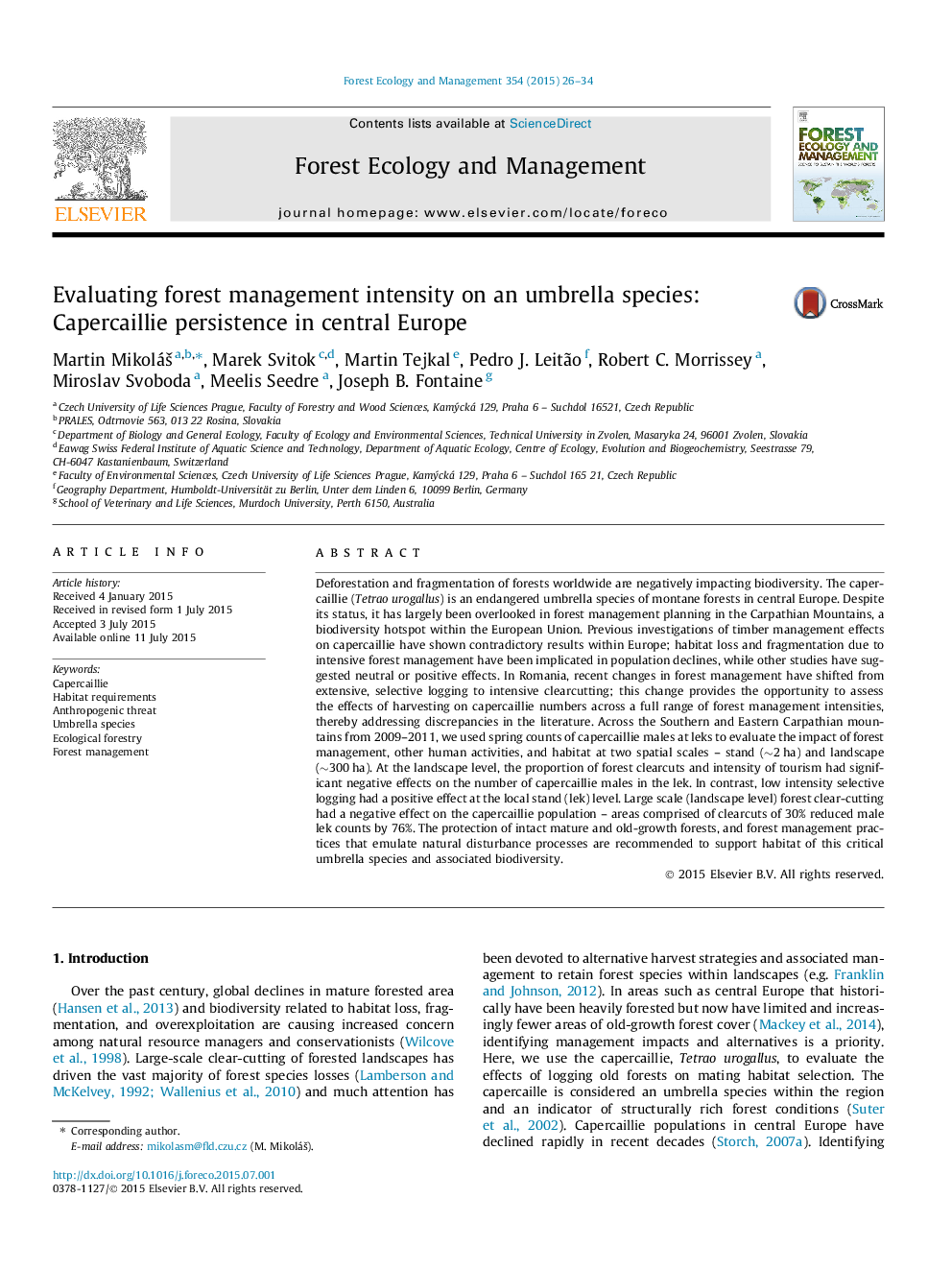| کد مقاله | کد نشریه | سال انتشار | مقاله انگلیسی | نسخه تمام متن |
|---|---|---|---|---|
| 86133 | 159168 | 2015 | 9 صفحه PDF | دانلود رایگان |
• The capercaillie is a prominent umbrella species of conservation concern across Eurasia.
• We examined forest harvesting methods and human activity impacts on capercaillie.
• High-intensity clearfelling had a large negative impact on capercaillie abundance.
• Low intensity selective logging had a positive effect.
• Protection of old-growth forests and emulating partial stand disturbance is recommended.
Deforestation and fragmentation of forests worldwide are negatively impacting biodiversity. The capercaillie (Tetrao urogallus) is an endangered umbrella species of montane forests in central Europe. Despite its status, it has largely been overlooked in forest management planning in the Carpathian Mountains, a biodiversity hotspot within the European Union. Previous investigations of timber management effects on capercaillie have shown contradictory results within Europe; habitat loss and fragmentation due to intensive forest management have been implicated in population declines, while other studies have suggested neutral or positive effects. In Romania, recent changes in forest management have shifted from extensive, selective logging to intensive clearcutting; this change provides the opportunity to assess the effects of harvesting on capercaillie numbers across a full range of forest management intensities, thereby addressing discrepancies in the literature. Across the Southern and Eastern Carpathian mountains from 2009–2011, we used spring counts of capercaillie males at leks to evaluate the impact of forest management, other human activities, and habitat at two spatial scales – stand (∼2 ha) and landscape (∼300 ha). At the landscape level, the proportion of forest clearcuts and intensity of tourism had significant negative effects on the number of capercaillie males in the lek. In contrast, low intensity selective logging had a positive effect at the local stand (lek) level. Large scale (landscape level) forest clear-cutting had a negative effect on the capercaillie population – areas comprised of clearcuts of 30% reduced male lek counts by 76%. The protection of intact mature and old-growth forests, and forest management practices that emulate natural disturbance processes are recommended to support habitat of this critical umbrella species and associated biodiversity.
Figure optionsDownload as PowerPoint slide
Journal: Forest Ecology and Management - Volume 354, 15 October 2015, Pages 26–34
